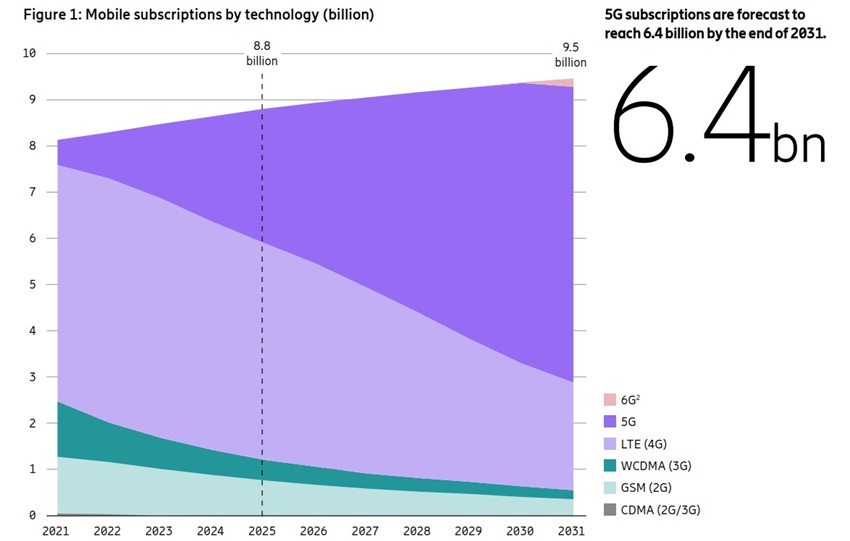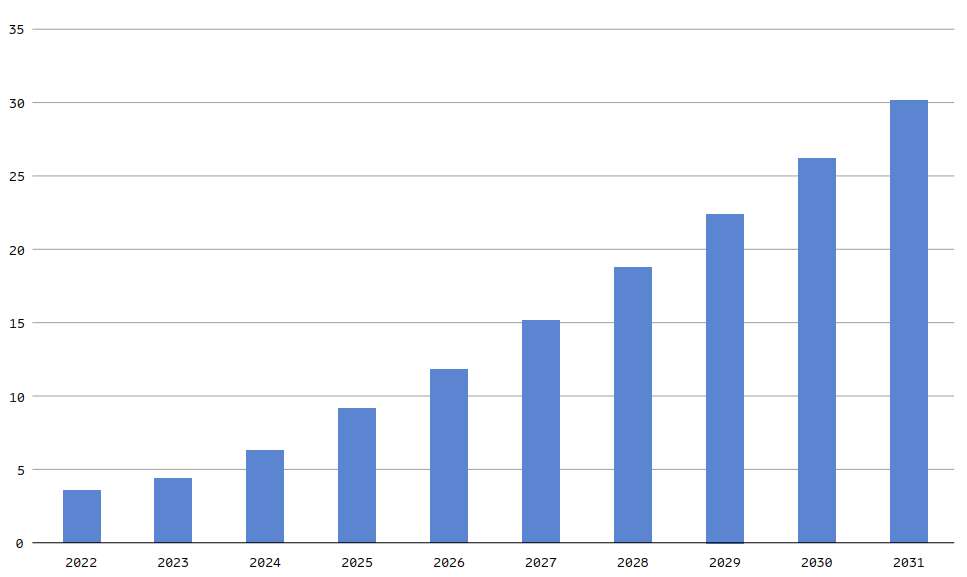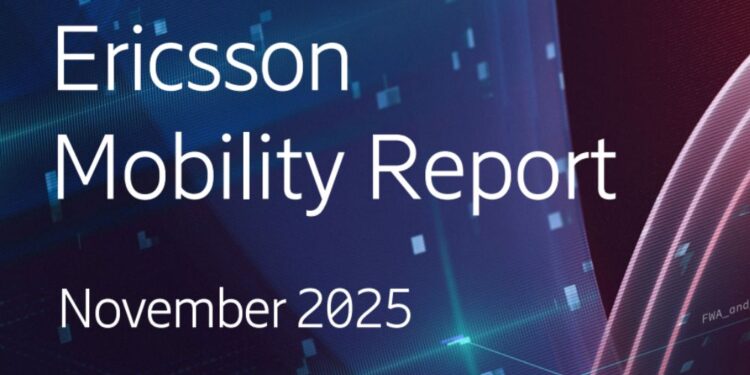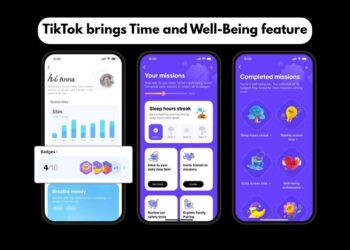The Ericsson Mobility Report for November 2025 projects that 5G will represent one-third of mobile subscriptions in 2025. The report also makes projections on the growth of FWA (Fixed Wireless Access), AI, 6G, etc.
Table of contents
Ericsson Mobility Report November 2025 Key Highlights
5G growth will hit billions in 2025
Ericsson estimates that 5G subscriptions across the world will reach 2.9 billion at the end of 2025, with North America to lead the numbers with 79%, followed by North East Asia at 61%. Western Europe and the Gulf Cooperation Council (GCC) follow at 55% each. It’s understandable because much of Asia and Africa are still adapting to the next-gen cellular technology. 5G is expected to largely overtake 4G by the end of 2027. It’s also likely that telcos will switch to 5G SA over NSA with time.

Likewise, 5G subscriptions could account for two-thirds of all mobile subscriptions by the end of 2031. The global 5G user base could reach 6.4 billion in 2031 if the growth continues at the current rate.
Check out: 5G in Nepal: Frequency band, Availability, Ntc, Ncell
6G user base
6G standardization (3GPP Release 21) has begun, so it could unleash a transformative era in telecommunications. A new Radio Access Network (RAN) will be established, and the network is expected to enhance the performance of FWA, IoT, etc.
Regarding the user base, global 6G subscriptions could reach 180 million by the end of 2031. That is possible if operators can launch 6G in or around 2030, as announced earlier.
The US, China, Korea, Japan, some European states, and India could launch commercial 6G around 2030.
Satellite broadband growth
The report mentions that satellite broadband subscriptions can now see a spike. With the deployment of many low-Earth orbit (LEO) satellites, wireless broadband is reaching new regions with each passing year. It’s projected that by the end of 2025, 6G subscriptions could reach 9 million, and by 2031, they could reach 30 million globally.

FWA momentum
Ericsson says that more service providers are offering FWA services over 5G, 159 to be exact. It represents 65% of all FWA service providers. And over half of them provide speed-based tariff plans. The service is growing extremely popular over the years, with five out of six regions, 75% or more service providers are offering FWA service.
The report estimates that there could be 350 million FWA adopters by 2031, with half of them being in the Asia-Pacific (APAC) region.
Do read: 2G, 3G, 4G, 5G explained simply
Mobile data growth
The mobile data growth between the second quarter of 2025 and the third quarter of 2025 was about 5%. Ericsson reports that the total global monthly data traffic reached 188 EB, which is higher than the expected yearly growth in the third quarter of 2025. The report attributes the sight growth increment to India and mainland China.

India, Nepal, and Bangladesh are reportedly atop with 36 GB of data use per month, which is expected to reach 65 GB per month in 2031. At second perches Western Europe with 25 GB of data usage per month, which is projected to reach 54 GB a month by the end of 2031. Do you keep mobile data always on, though?
| Region/Country | 2025 (per month) | Projected in 2031 (per month) |
| India, Nepal, Bangladesh | 36 GB | 65 GB |
| Western Europe | 25 GB | 54 GB |
Ericsson says that the growth in mobile data usage is attributable to increasing use of smartphones, average data volume per subscription, and video consumption. Video traffic could account for 76% of all mobile traffic at the end of 2025.
Check out: Best 5G phones in Nepal
Conclusion
The world is gradually leaning towards 5G and is getting ready for 6G. There’s no doubt that 5G and its more enhanced versions and 6G will further strengthen AI, VR, streaming, metaverse, and other use cases. The industrial application of 5G at a large scale will still take time, but maybe the advent of 6G will sort things out better. The next few years will be key for 5G, global cellular transformation. And we are also curious about the possibility of 6G launch around 2030.
Don’t miss: 5G vs 4G mobile network











